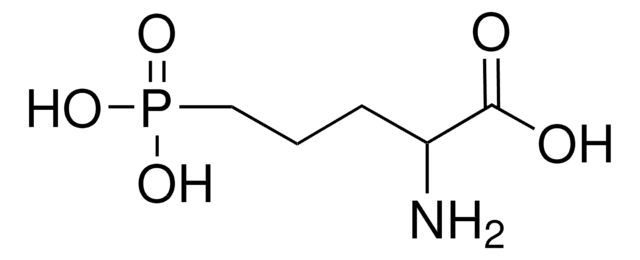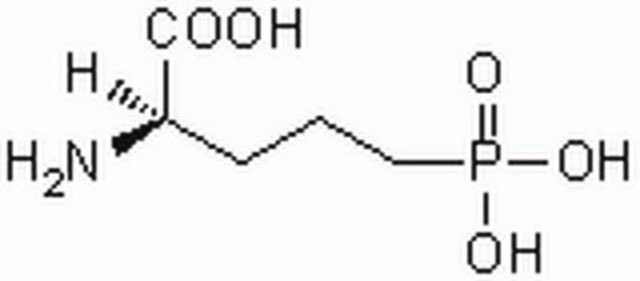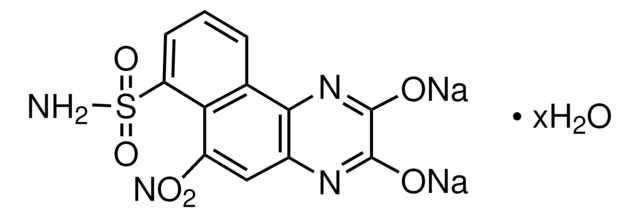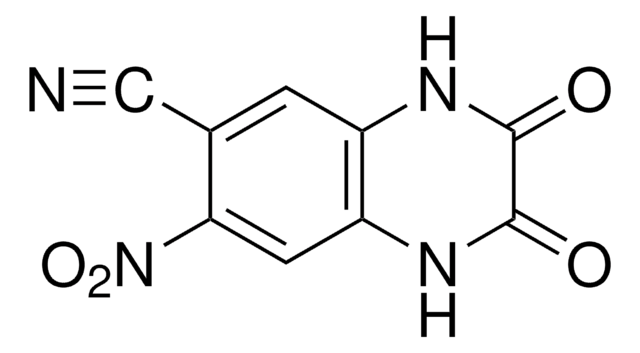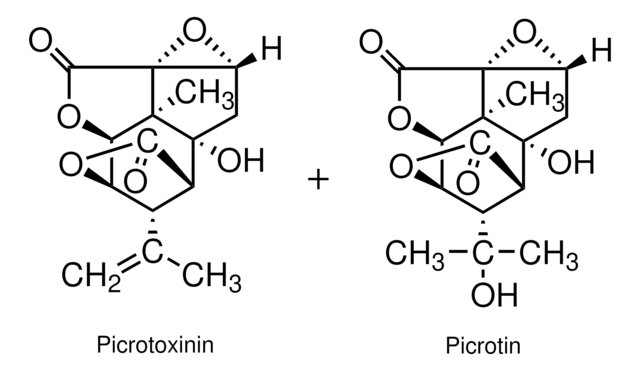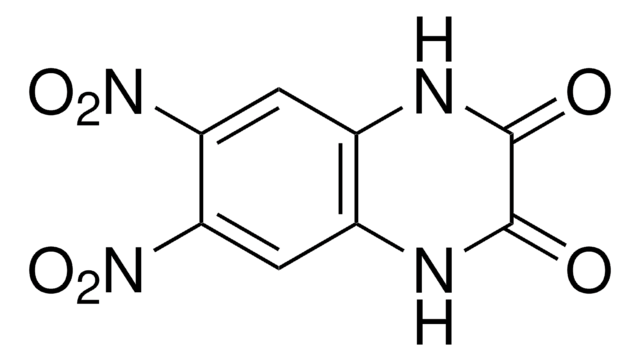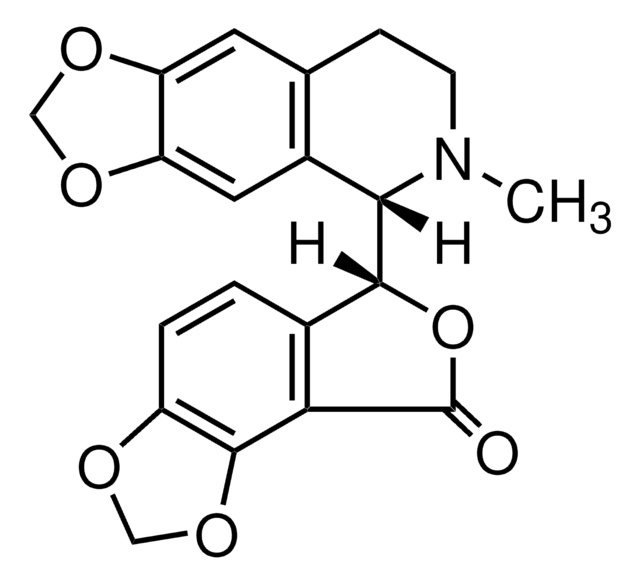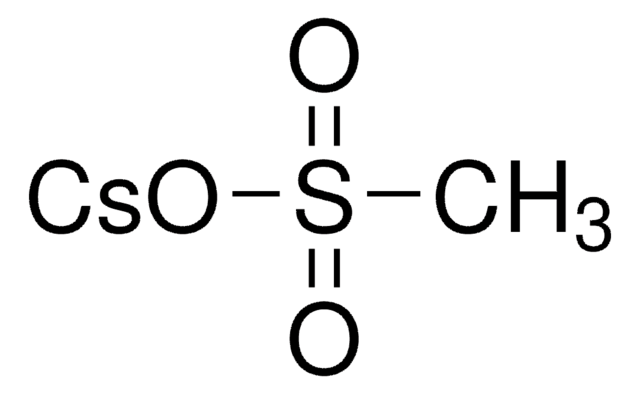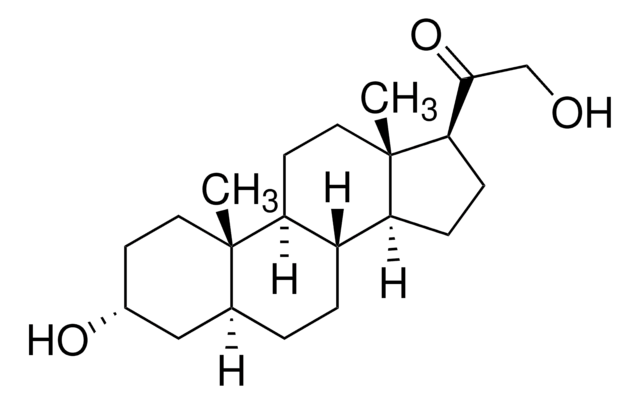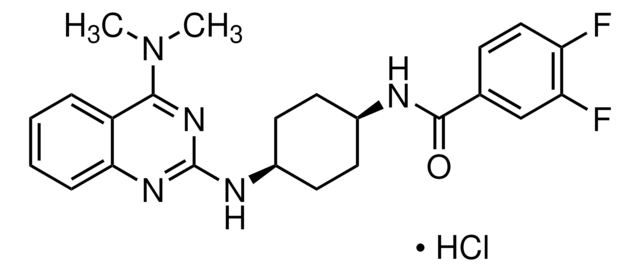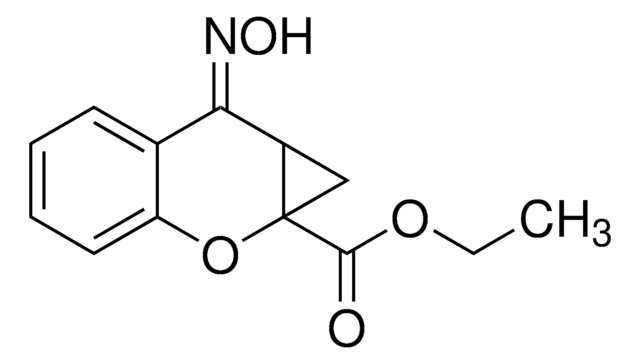A8054
D(−)-2-Amino-5-phosphonopentanoic acid
NMDA receptor antagonist
Synonyme(s) :
D(−)-AP-5, D(−)-APV, D-2-Amino-5-phosphonovaleric acid
About This Item
Produits recommandés
Pureté
≥98% (TLC)
Forme
powder
Pureté optique
optical purity: ≥90% (HPLC, Marfey′s reagent)
Technique(s)
ligand binding assay: suitable
Couleur
white
Pf
245-246 °C
Chaîne SMILES
N[C@H](CCCP(O)(O)=O)C(O)=O
InChI
1S/C5H12NO5P/c6-4(5(7)8)2-1-3-12(9,10)11/h4H,1-3,6H2,(H,7,8)(H2,9,10,11)/t4-/m1/s1
Clé InChI
VOROEQBFPPIACJ-SCSAIBSYSA-N
Informations sur le gène
mouse ... Grin2a(14811)
rat ... Grik1(29559) , Grin2a(24409) , Grin2b(24410) , Grin2c(24411) , Grin2d(24412)
Vous recherchez des produits similaires ? Visite Guide de comparaison des produits
Application
Actions biochimiques/physiologiques
Code de la classe de stockage
11 - Combustible Solids
Classe de danger pour l'eau (WGK)
WGK 3
Point d'éclair (°F)
Not applicable
Point d'éclair (°C)
Not applicable
Équipement de protection individuelle
dust mask type N95 (US), Eyeshields, Gloves
Certificats d'analyse (COA)
Recherchez un Certificats d'analyse (COA) en saisissant le numéro de lot du produit. Les numéros de lot figurent sur l'étiquette du produit après les mots "Lot" ou "Batch".
Déjà en possession de ce produit ?
Retrouvez la documentation relative aux produits que vous avez récemment achetés dans la Bibliothèque de documents.
Les clients ont également consulté
Rats and Blockade of Long-Term Potentiation in viva by the
IV-Methyl-D-Aspartate Receptor Antagonist AP5
Notre équipe de scientifiques dispose d'une expérience dans tous les secteurs de la recherche, notamment en sciences de la vie, science des matériaux, synthèse chimique, chromatographie, analyse et dans de nombreux autres domaines..
Contacter notre Service technique